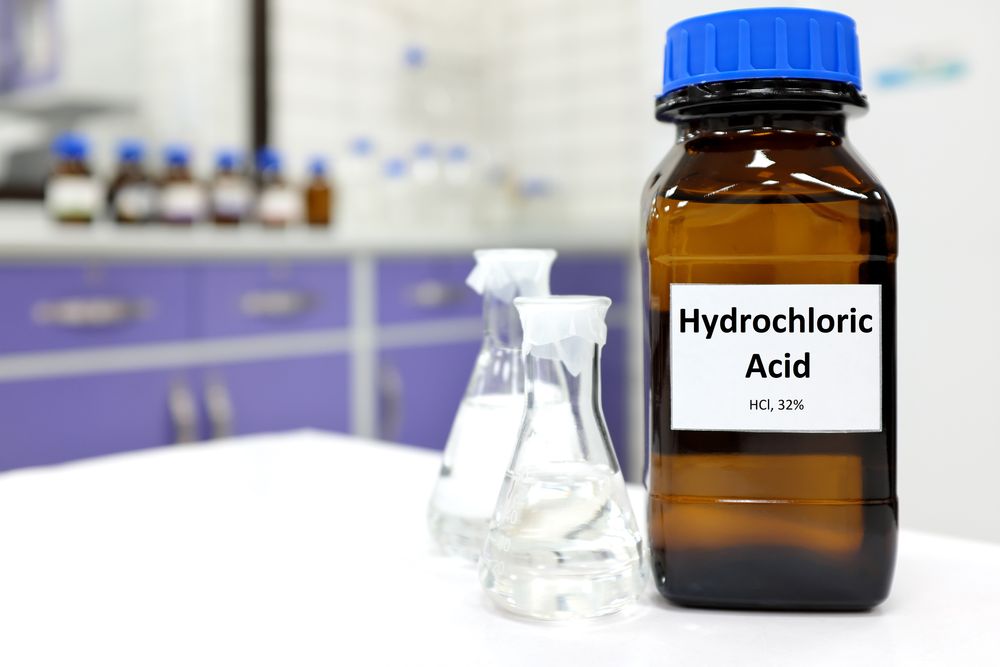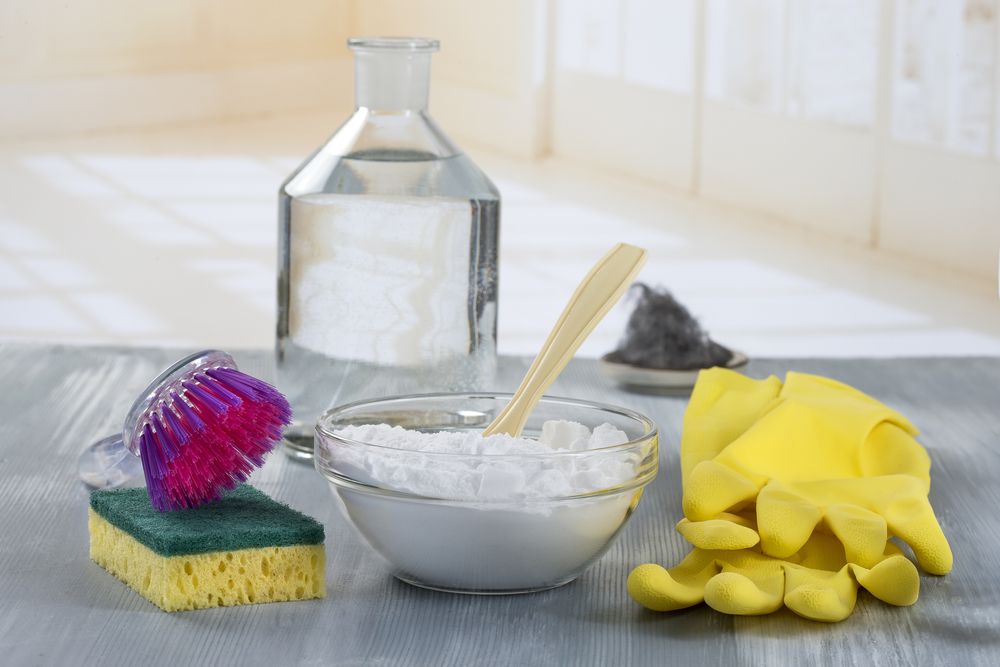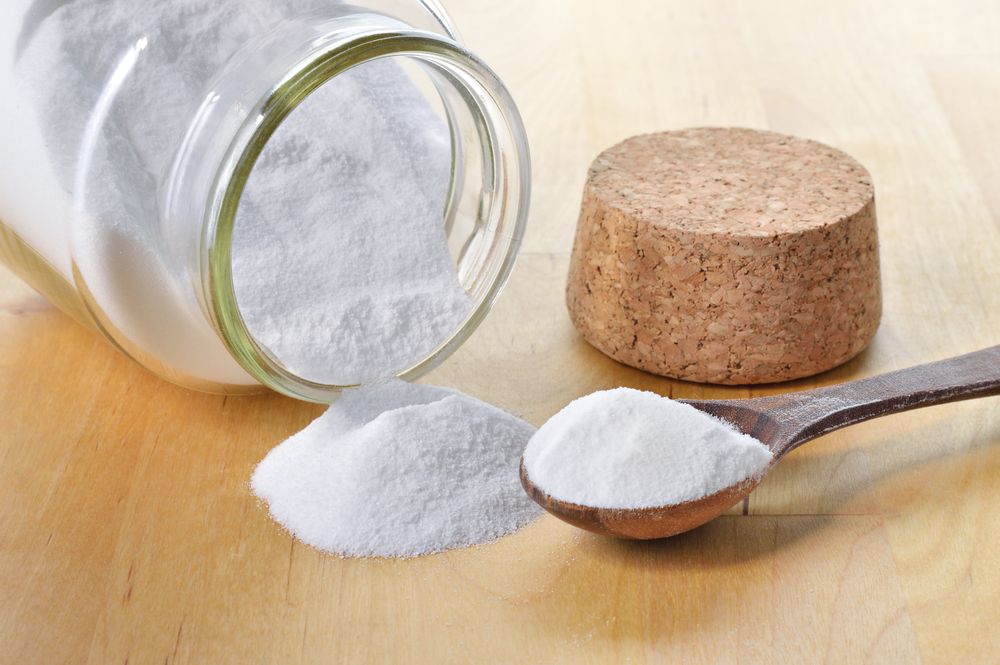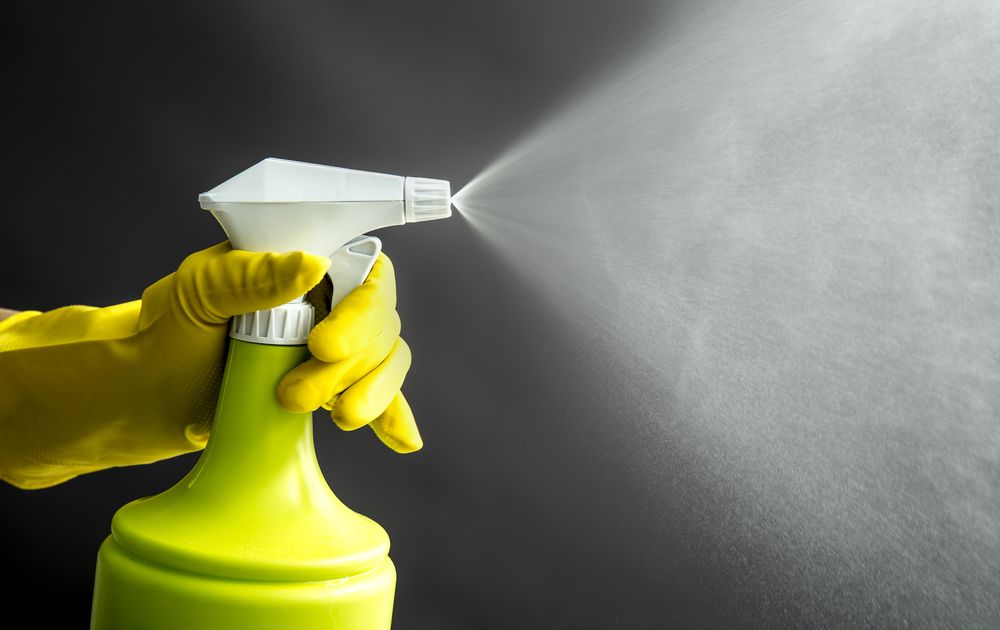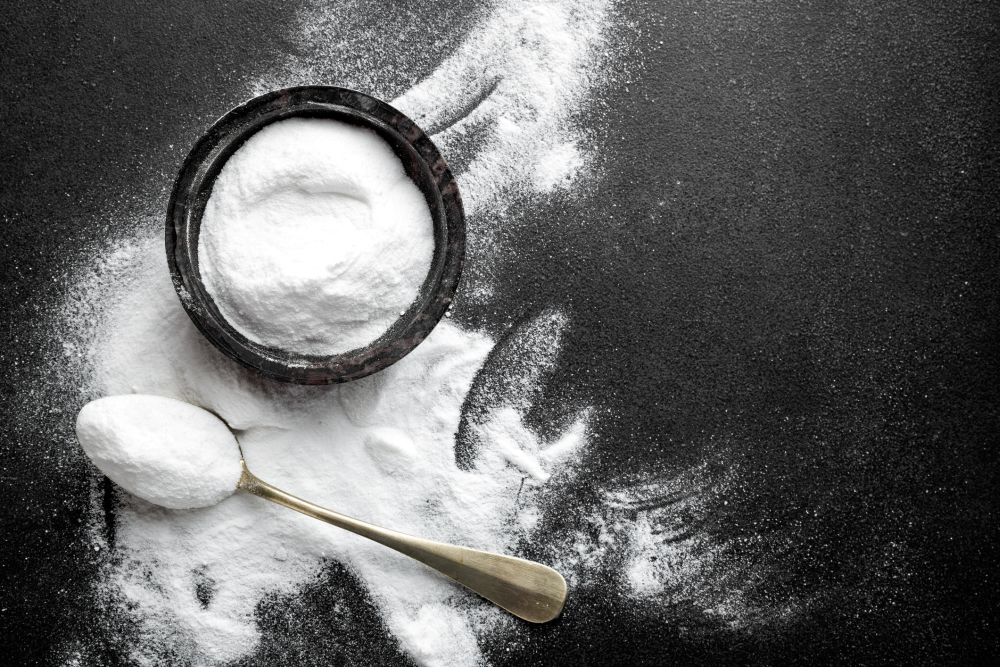Muriatic Acid: How to Use and What to Use It For
Muriatic acid can be a powerful and dangerous tool. With a bit of caution, you can safely use this powerful agent to clean a variety of surfaces.
It is essential to always take the necessary precautions when using muriatic acid and to have a working knowledge of the risks involved.
Keep reading to find out everything you need to know about muriatic acid, including safety precautions and effects of exposure, usage examples, and disposal instructions.
We are also showing you how to use muriatic acid for various purposes, like cleaning a swimming pool, removing rust, killing mold or mildew, and getting rid of paint.
Table of Contents
What Is Muriatic Acid?
Muriatic acid is also known as hydrochloric acid (ClH3O). It is a clear liquid with a sharp odor that fumes in moist air, used in the petroleum,mining, and chemical industries. It usually comes in a 30-35% concentration, with the rest of the solution being water. You can find it at most hardware stores.
Uses
Muriatic acid has many uses, like stripping paint off metal or concrete surfaces. It will remove marker stains from almost any surface, including walls, wood, cement or concrete floors, and grout lines in tile.
You can also use this acid to eliminate rust, clean swimming pools, balance the pH, kill mold and mildew, clean filthy bathrooms, neutralize alkalinity in masonry, and clean bricks.
Safety Tips
Harsh muriatic acid fumes are very hazardous. Always read and follow the safety guidelines provided by the manufacturer to ensure a safe project.
Check out the following tips to ensure your safety when handling this type of acid:
- Always ventilate the area before starting any project by using an adequate fan to dissipate fumes.
- Apply a small amount of water to the surface first before applying the acid to protect your flooring or outdoor surfaces.
- Wear chemical-resistant gloves and a face mask at all times when handling the acid. If you have to work on floors, also wear protective knee pads and shoe covers.
- Always keep an eye on children since either of these mixtures mixed with water can produce toxic chlorine gas if not handled carefully.
- Never mix the acid or chlorine bleach with other household cleaners. This could cause toxic fumes to be released into the air.
- Always add acid to water and not vice versa, because adding water to acid will cause an explosion.
- Immediately neutralize any spilled acid with baking soda or garden lime (sprinkle the substance on the affected area).
- Rinse all surfaces thoroughly afterward with clean water before neutralizing them.
Effects of Exposure
As with any high pH substance, muriatic acid can burn skin, eyes, lungs, and clothes quickly if not used properly. It can alsocause irritation or corrosion to skin and mucous membranes if it comes into direct contact at sufficient concentrations.
Inhaling the dangerous vapors may cause coughing, choking, shortness of breath, or fluid in the lungs (pulmonary edema). Ingesting this compound will cause severe burns to any tissue it touches within the gastrointestinal tract.
How to Use Muriatic Acid
Check out the following instructions to learn how to safely and effectively use muriatic acid.
Remove Paint from a Metal Surface
- Gather the following supplies:
- Muriatic acid
- A wire brush
- A bucket
- Water
- Pour the acid into a bucket.
- Use the wire brush to scrub at paint until it is removed.
- Rinse the metal surface with water and then use a clean cloth to wipe it dry.
- Repeat these steps until you remove all the paint.
Remove Paint from a Concrete Surface
- Add these items to your list:
- Degreaser
- Muriatic acid
- Plastic container
- Water
- Stiff-bristled brush
- Clean the surface of the concrete with a degreaser to remove any oil or grease that may be present.
- Use a plastic container to mix the acid in so that you do not have to worry about it coming into contact with any other material (1 part acid and 4 parts water).
- After the degreaser has had a chance to work, apply the acid directly to the paint or use a brush to help spread it out. The paint should start to bubble up almost immediately.
- Give everything time to work and come back later with water and a stiff-bristled brush to remove the paint.
Using muriatic acid could produce undesirable results if the concrete was acid stained since it may not react as effectively with colored stains as it does with standard pigment paints. Because of this, it’s recommended to test an inconspicuous area before attempting this technique on your entire surface.
Remove Rust
- What you need:
- Muriatic acid
- A plastic container
- A wire brush
- Water
- Pour a small amount of acid into a plastic container.
- Dip a wire brush in the substance and start scrubbing the rust off.
- Rinse the area with water and dry it thoroughly.
- Repeat these steps until you manage to get rid of the entire rust.
Clean Bricks
If you are wondering how to clean bricks with muriatic acid, here is what you have to do:
- Make sure you have the following items:
- Muriatic acid
- Water
- Spray bottle
- Bucket
- Cloth or sponge
- Baking soda
- Stiff-bristled brush
- Mix 1 part acid with 10 parts water in a bucket.
- Mist the bricks with clean water.
- Dip a sponge or a cloth in the acid solution and apply the mixture to the bricks.
- Let it sit for a couple of minutes.
- Apply baking soda to the bricks to neutralize the acid.
- Use a stiff-bristled brush to remove acid residue from the bricks.
- Rinse the bricks with plenty of clean water.
Neutralize Alkalinity in Masonry
- Gather these supplies:
- Muriatic acid
- Water
- Plastic container
- A brush or a sponge
- In the plastic container, mix the acid with water in a ratio of 1 part acid to 10 parts water.
- Apply the mixture to the masonry surface using a brush or sponge.
- Rinse the area with water after applying the acid.
It is important to note that acid should not be used on limestone since it can damage it.
Clean a Swimming Pool
- Gather the following supplies:
- A PH test kit
- A PH increaser or reducer
- Muriatic acid
- A commercial acid sprayer or garden sprayer
- Pressure washer
- Bucket
- Long-handled scrub brush
- Baking soda
- Check the pool water’s pH level. Ideally, it should be between 7.2 and 7.8. If the pH level is not within this range, you will need to adjust it before cleaning the pool with the acid by using a pH increaser or reducer.
- Apply the acid directly to the swimming pool walls using a commercial acid sprayer or garden sprayer.
- Give it time to dissolve any scale or debris that may be on your walls (usually 1 hour).
- Use a pressure washer equipped with a turbo nozzle (the longer the shaft of attachment between nozzle and trigger handle, typically greater distance between nozzles) to wash away all traces of acid residue from your pool’s walls.
- Clean the swimming pool’s bottom. To do this, pour a gallon of acid into a bucket and then use a long-handled scrub brush to scrub the surface.
- Allow it time to work and use the pressure washer to rinse off the acid residue.
- Neutralize any remaining traces of acid in your pool by adding baking soda until the pH level reaches 7.2 – 7.8.
- Allow the baking soda to mix with the water for about an hour before swimming in your pool.
Kill Mold and Mildew
- Collect the following items:
- Muriatic acid
- Water
- Eyedropper or plastic squeeze bottle
- Spray bottle
- Stiff brush
- Mix the acid with water at a ratio of 1 part acid to 5 parts water. Use an eyedropper or a plastic squeeze bottle to ensure that everything blends well.
- Pour the mixture into a spray bottle and apply it to the affected area. Spritz the solution onto the mold until it is saturated.
- Let it sit for 10 to 15 minutes.
- Use a stiff brush to scrub the area clean.
- Rinse the surface with water and dry it thoroughly.
If you are treating walls with acid, dilute the acid using a ratio of 1 part acid to 10 parts water. For floors, you can use 1 part acid to 4 parts water.
Clean Extremely Dirty Bathrooms
- What you need:
- Muriatic acid
- Water
- Spray bottle
- Test the area in the bathroom for any moisture. If the area is not completely dry, it is best to wait before using the acid.
- Mix the acid with water in a ratio of 1 part acid to 10 parts water.
- Pour the mixture into a spray bottle and agitate it with a drill.
- Spray the solution on stained or discolored surfaces.
- Allow it to sit for 15 to 20 minutes.
- Rinse the surfaces thoroughly with water until the area is immaculate.
This process can be time-consuming, but acid will remove stains that are otherwise very difficult to remove.
How to Dispose of Muriatic Acid
In general, concentrated acids should never be poured down the drain since they can corrode pipes and cause blockages. Instead, you should neutralize the acid by adding baking soda until the solution is no longer acidic.
Then, you can safely pour it down the drain or into the trash. It mixes completely with the water in the sewer system, rendering it harmless.
Muriatic acid may damage concrete surfaces, so be careful when pouring it on sidewalks or driveways; new concrete typically does not need to be cleaned at all before applying staining agents. If you do pour some on these surfaces, rinse off with lots of water as soon as possible.
The best course of action is to get in touch with your local recycling center and follow their instructions. They will have the best knowledge of local policies. In any case, it is essential to be aware of the dangers of this chemical and to handle it with care.
FAQ
Learn more information about muriatic acid and how to use it safely.
How long does acid last for?
The shelf life of muriatic acid will depend on the concentration and the packaging. However, many acids can last for years as long as you keep them in a cool, dark place.
How to use muriatic acid to clean concrete?
Mix the muriatic acid with water at a ratio of 1 part acid to 4 parts water. Spray it onto the concrete and allow it to sit until the stains begin to fade. Then, scrub with a stiff brush and rinse everything with water.
What does muriatic acid do for a pool?
Muriatic acid will lower the pH levels in your pool and help to remove any stains or dirt that may be present. It is an integral part of the pool cleaning process.
Is it safe to use muriatic acid around plants?
No, it is not safe to use muriatic acid around plants. In fact, it is not safe to use it around animals, children, or even yourself. It is best to keep it locked away and out of reach from unwanted individuals.
What is the difference between muriatic acid and hydrochloric acid?
There is no difference. Muriatic acid is an alternative name for hydrochloric acid (ClH3O).
What neutralizes acid?
Baking soda is the most common substance used to neutralize acids. It will turn the acid into salt and water, which can be safely poured down the drain.
Is it safe to mix muriatic acid with bleach?
No, it is not safe to mix muriatic acid with bleach. The two chemicals will react violently and may cause a dangerous explosion.
Does muriatic acid kill grass?
Yes, grass will quickly die off if it comes into contact with muriatic acid. You should store the substance in a cool, dark place to prevent accidental contact.
Where can I find muriatic acid?
Muriatic acid is available at pool supply stores and most hardware stores (including Lowe’s and Walmart). You can also order it online.
Do you add acid to water or water to acid?
To prevent unfortunate accidents, always add muriatic acid to water, not the other way around.
Does acid go bad?
Muriatic acid may eventually lose its effectiveness if it’s not stored correctly.
How much muriatic acid to add to a pool?
Use between 1/4-1/2 cup of muriatic acid for every 10,000 gallons of water in the pool. It can also lower alkalinity and the PH level.
What are some examples of household acids?
Several acids can be found in the average household, including hydrochloric acid, nitric acid, and acetic acid.
Will baking soda remove iron from pool water?
Yes, it will. Baking soda can neutralize acid, which you need to get rid of the iron.
Is baking soda bad for the pipes?
Yes. Baking soda should not be used to clean the pipes as it can cause a build-up that will eventually clog them. Instead, use a commercial product specifically designed for this purpose.
How to neutralize acid on skin?
If you contact acid, quickly rinse the area with lots of water and then neutralize it with baking soda. Apply a baking soda paste and water to the area and let it sit for a few minutes before rinsing off. Repeat as necessary.
Is muriatic acid safe for toilets?
No. Muriatic acid should never be used on toilets as it may damage the porcelain and lead to chipping or cracking. On top of that, muriatic acid fumes are toxic to humans and pets.
Will muriatic acid eat away at bricks?
Yes, muriatic acid will eat away at bricks because of the acidic compounds. You can still clean bricks with muriatic acid, but don’t allow the substance to sit for more than a couple of minutes before neutralizing it.
Final Thoughts
Muriatic acid is a powerful chemical that should be handled with caution. You can use it to clean pools, remove stains, and lower pH levels. However, it is not safe to use around plants, animals, or children.
It is also essential to keep in mind that you can use baking soda to neutralize the acid in case of an emergency. Remember to store the substance in a cool, dark place and always read the label thoroughly before use.
